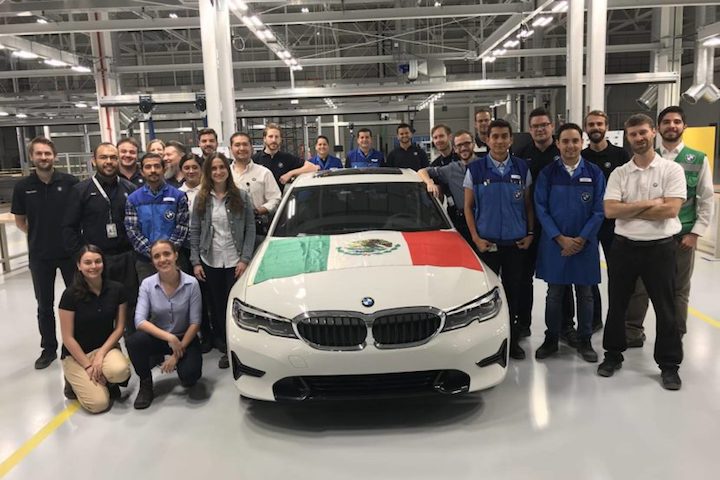BMW AG executives opened the automaker’s first Mexican assembly plant extolling its value for the coming years, just a week after President Donald Trump threatened a fresh tariff threat on Mexican goods.
BMW spent about $1 billion on the plant, set in the vast arid plains of San Luis Potosi in north-central Mexico. It’s one of three—the other two are in Germany and China—that will produce the next-generation 3 Series sedan for sale in the U.S. and other markets.

The timing comes just days after President Trump threatened to impose a 5% tariff on all goods imported from Mexico on June 10, unless that country takes unspecified steps to stop illegal migration from Central America. The levies would escalate every month until reaching 25% in October according to the White House plan.
Those tariffs would inflict financial pain on BMW and its newest plant, said Kristin Dziczek, vice president of industry, labor, and economics at the Center for Automotive Research in Ann Arbor. “It hurts them a lot,” she said. “They’re there because they want to be part of North America, and North America is the U.S.”
With its low wages, free-trade pacts with multiple countries, and proximity to the world’s second-biggest car market, Mexico has lured a raft of automakers from Nissan Motor Co. to Volkswagen AG in recent years. That appeal is unlikely to change over this latest threat, in part because the factory is not dependent only on the U.S. BMW says the San Luis Potosi plant “will produce for the world.”
The plant is meant to primarily supply the U.S. and Mexico, with lesser amounts shipped to Central America and the Caribbean, according to LMC Automotive. It employs 2,000 people and is supposed to ramp up to a maximum capacity of 175,000 vehicles a year, though the pace may slow because of tariffs, according to Juergen Pieper, head of automotive research at Bankhaus Metzler.
A 5% tariff would add about $2,000-$2,500 of extra cost per vehicle, which might have negligible impact for a short period of time, but would put the 3 Series at a competitive disadvantage against the Audi A4, which is made in Germany, and the Mercedes C-Class, produced in Tuscaloosa, Alabama and South Africa, said Jeff Schuster, an analyst with LMC.
Tariff Threat
If tariffs climb all the way to 25%, it would cost between $10,000 and $12,000 more and essentially shut down production at the plant, Schuster said. BMW’s Munich plant could take over some production for the U.S., but it couldn’t absorb all of it.
Sales of the 3 Series plunged 25% in the U.S. last year to 44,578 vehicles as consumers continued to migrate to SUVs. But it was still BMW’s best-selling model following the X3 and X5 crossovers.
President Trump’s trade war with China cost BMW somewhere in the “3-digit million area” in 2018, but hasn’t affected 2019 earnings guidance, BMW CFO Nicolas Peter told investors on an earnings call last month.
The Mexican factory is about four hours north of Mexico City—in the same area where Ford Motor Co. was going to build a plant before canceling in 2017. It is expected to account for one-fifth of BMW’s North American production. BMW currently produces most of its cars for North America in South Carolina, but leans heavily on components imported from Mexico. It bought $2.5 billion worth of parts from Mexican suppliers in 2015.
Plant Tour
This is not the first time BMW’s Mexico plant has landed in President Trump’s crosshairs. He singled out the German automaker in 2017, threatening to slap BMW with a 35% import duty on foreign-built cars if it proceeded with plans to open a new plant in Mexico, according to German newspaper Bild. Chief Executive Officer Harald Krueger tried to win over the Trump administration with a 2017 visit to its Spartanburg, South Carolina plant, touting its made-in-America SUVs.
Senior Mexican officials met with Trump administration counterparts on Wednesday in an attempt to negotiate a resolution that would stop the imposition of tariffs. Republican lawmakers in Congress are also pressing for a deal, with some some members of the party questioning Trump’s use of the levies as leverage on border enforcement.







